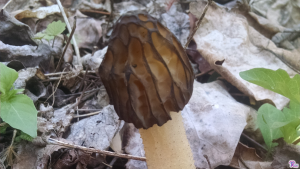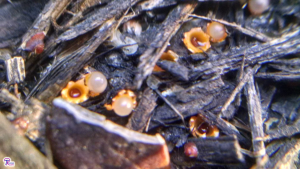#045: Mushroom Morphology: Sequestrate Fungi
The sequestrate fungi* are an unnatural grouping of mushroom-forming basidiomycetes that have adapted to life in desert areas by keeping developing spores inside the fruiting body. Because of this they are included among the gasteroid fungi. Like the other gasteromycetes, sequestrate fungi cannot form ballistospores (see FFF#013), and cannot forcibly discharge their spores. Sequestrate fungi have a stipe and a cap-like head, similar to toadstools. However, the head never fully opens and the spore-bearing surface remains enclosed by the cap. The gleba (fertile tissue) does not develop regular gills or pores. Instead, the gleba forms irregular pockets that are sometimes gill-like in appearance. This is a highly diverse group of fungi, so there are many variations on this basic structure. Some sequestrate fungi partially open their caps, while others never do. Some have reduced stipes and are barely held above the ground.







![#011: Characteristics of Kingdom Fungi [Archived]](https://www.fungusfactfriday.com/wp-content/themes/hueman/assets/front/img/thumb-small-empty.png)


